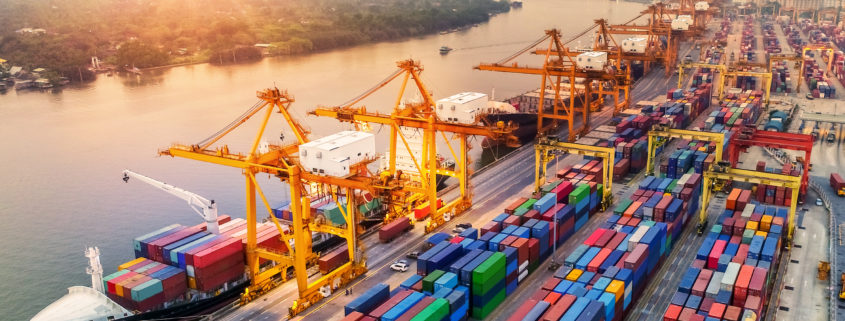Competitive Shipping: Container transportation bottlenecks not easing up yet
By Bruce Abbe, SSGA Strategic Adviser for Trade and Transportation
The current crisis in global container shipping continues, and the end line seems to keep moving further out.
Today, representatives of the Specialty Soya and Grains Alliance (SSGA) participated in a virtual meeting, as part of a large working coalition of national agriculture organizations, with the Federal Maritime Commission (FMC) in an effort to impress upon regulators the urgency ag exporters are facing as they wait for supply chains to get unclogged and moving again.
SSGA reached out to member exporters late last week and received specific feedback on problems member shippers are experiencing inland and at the ports that the organization will be sharing with the FMC.
Meanwhile, the international business news media continues to become aware of the broadening impact of the crisis:
‘War of words’
“War of words escalates as exporters scramble for scarce containers,” Freightwaves reported last week. The problem of ocean carriers starting to ship containers empty back to Asia and denying space and equipment for ag exporters, first brought under the spotlight by SSGA in October, is now being documented and getting attention of more government leaders.
Global food crisis
“Food is piling up in all the wrong places, thanks to carriers hauling empty shipping containers,” Bloomberg news reported last week in a story about the crisis upending global food trade.
SSGA Executive Director Eric Wenberg was quoted in the story and noted the shipping problems will soon lead to higher prices for food products in Asia because of the logistics problems confounding the supply chains. Food price inflation, if it starts to kick in, can lead to impact on the overall global economy, Wenberg warned.
Container supply
Getting more containers into the system alone will not be enough to fix the global logjam, experts say. Ocean carrier Hapag-Lloyd CEO Rolf Habben-Jansen told the Journal of Commerce that while HL added some 300,000 TEU of containers in 2020, the accelerated production of containers “will provide only limited relief to supply chains out of Asia.”
Worsening port congestion on the U.S. west coast and European port hubs is putting a big kink in the chains. “Rising demand can’t stop blank sailings,”, JOC reported, as carriers apparently are prepared to cancel sailings despite demand if they can’t get through-put at the ports
Hapag is implementing a “comprehensive schedule recover plan” to get its ships back into their intended schedules, Habben-Jansen said. Unfortunately, he added, that plan “will result in some services not having a sailing for one to two weeks,” even though the vessels will not be idle during that time.
Clogged until late spring?
Terminal operators at the leading west coast ports of Los Angeles and Long Beach told Journal of Commerce they may not be able to dig out of the backlog of record container volumes, congestion and catch-up to vessel schedules at the ports until late spring.
“Terminals are full. There’s nowhere to put the containers. We’re 35 percent below what we normally do on deliveries (to truckers),” Ed DeNike, president of terminal operator SSA Containers, told JOC.
Labor shortages are now a critical problem with more dockworkers quarantined due to COVID, too: “The single biggest thing we can do is vaccinate,” Weston Bar, president of the Harbor Trucking Association said.
Executive order coming?
There are news reports just out that President Biden is preparing an executive order calling on several federal departments, including Homeland Security, Commerce, National Security Council and others to review critical supply chains and reduce U.S. dependence on imports for important pandemic-related supplies. The plan noted the U.S. is vulnerable across a range of supply chains besides medical supplies and “dangerously dependent on foreign suppliers.”
Of note, all of the major international steamship container lines are owned by foreign entities. It’s not only a matter of where important goods are manufactured; it’s also how we get critical cargo, including food, delivered to our country and to our foreign customers and partners.







Leave a Reply
Want to join the discussion?Feel free to contribute!